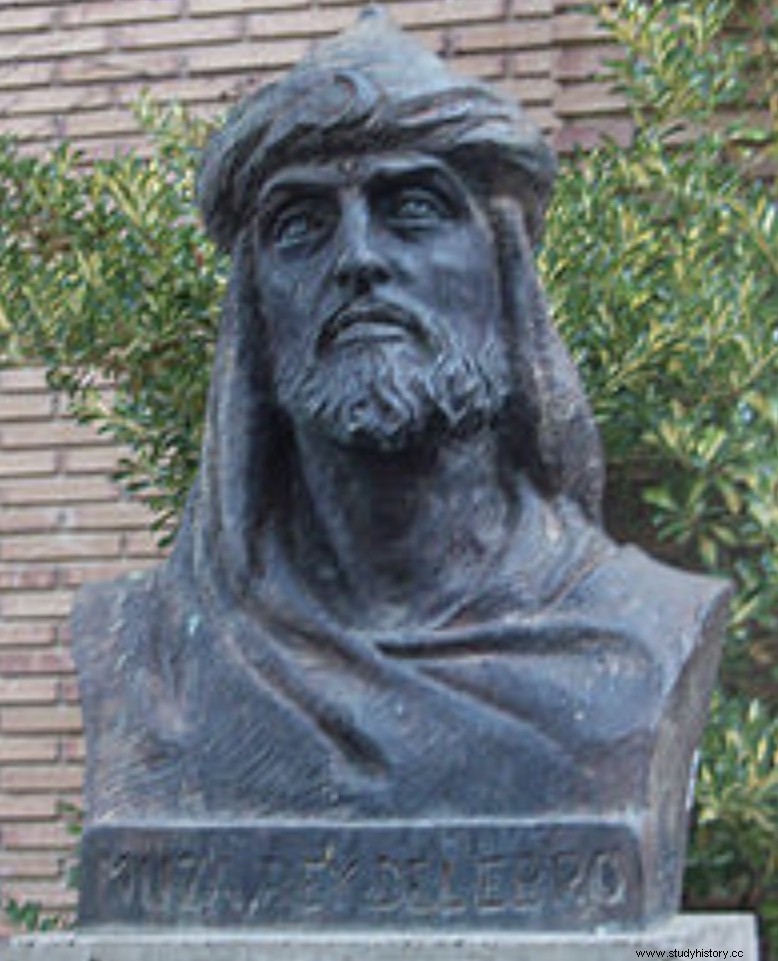Year 859. Queen in Asturias for nine years Ordoño I, son of Ramiro I. With these two monarchs, the Cantabrian line of succession of Fruela Pérez has been definitively imposed on the throne of Oviedo against the extinct lineage of the first Asturian king Don Pelayo. Ordoño I is trying to impose the same repopulation policy in the eastern part of his kingdom that he has followed in the Duero valley, after the relative depopulation of said area imposed by the brother of Fruela Pérez, Alfonso I, who reigned between the years 739 and 757 and that he encouraged the transfer to Asturias of the Christians from the towns he attacked in that area, while at the same time killing their Muslims.
It is not the object of this entry to deal in depth with the reign of Alfonso I or the depopulation of the Duero valley. Suffice it to say that for many authors this concept, defended by Sánchez Albornoz, has been overcome. They support the thesis of a relative unemployment of the populations of the Duero valley, promoting the arrival in Asturias of the Christian inhabitants of the region, but which did not become so radical as to leave the entire area uninhabited.

Neither in Asturias was there a territory to accommodate all that population, nor did Alfonso I have enough strength to force all the inhabitants of such a large area to leave their properties. Rather, it seems that when medieval sources use the term depopulate, they refer to areas that ceased to be under the umbrella of an administrative organization. Thus, nuclei that had housed episcopal seats (Salamanca, Palencia, Osma, Ávila) are no longer mentioned in the chronicles, both Latin and Muslim. This means that those who continued to inhabit these areas (in smaller numbers, yes) were not subject to a central power, neither Christian nor Muslim, nor, therefore, to a recognizable authority. It was more a land without law than a land without people.
Returning to Ordoño I, we said that the repopulation policy, with the meaning outlined above, of the Duero valley that had been carried out in places like León and Astorga stumbled to undertake it in the Ebro basin with a difficulty represented by a man and a place :Mûsá Ibn Mûsa and Albelda Castle.
Mûsá Ibn Mûsa, a Muslim governor, belonged to the powerful Banu-Qasi family. His name derives from Count Casio, who was one of the noblemen of Visigothic Hispania who, after the Arab invasion in 711, had accepted Muslim rule in exchange for keeping their properties and converting to Islam. Since then this family was the most notable of the Upper Mark, the administrative demarcation of the northern area of Muslim al-Andalus, of which our Musa was governor.
Mûsá Ibn Mûsa's mother, Oneca, joined his father after becoming the widow of the leader of the nascent kingdom of Pamplona, Iñigo Arista, with whom she had had two sons:Fortún and Iñigo Íñiguez. At the time of Ordoño I, Pamplona was governed by the son of the latter, García Íñiguez, a relative of his as a nephew, and an ally of the Banu-Qasi.
In the year 852 Ordoño I had had to undertake a rebellion of the Vascon subjects of his kingdom and in the course of this campaign he also found a Muslim aceifa in the area. Although Ordoño was victorious in the confrontation with both the Basques and the Arabs of Prince Al-Mundir, the circumstance was taken advantage of by Musa to take and fortify the strategic Albelda square, on the border with La Rioja and key to controlling movements in the Ebro valley. Ordoño tried to put an end to this threat, but after a long confrontation with no clear result, he was unable to dislodge Musa from Albelda. His alliance with his relative García Íñiguez did not make things easy for Ordoño I.

But an unforeseen circumstance came to modify this situation. In the year 859 there was a Viking attack on Pamplona. The Normans took García Íñiguez hostage who was released after a year in exchange for paying a ransom of 90,000 gold pieces. But during that year Mûsá Ibn Mûsá did not move a finger to help his relative, which shattered the alliance between the people of Pamplona and the Banu-Qasi.
Musa took the opportunity to carry out several aceifas in the area of La Rioja and Navarra, taking advantage of the excellent strategic position of his stronghold of Albelda, which he decided to fortify even more. This threat made Ordoño I decide to act against a construction that not only put the possessions in the east of his kingdom at risk of constant attack, but also made it impossible for him to follow the same repopulation policy in the Ebro valley that had carried out in the Duero.
After securing an alliance with García Íñiguez (whom he promised with his daughter Leodigundia) that prevented him from supporting Musa, Ordoño I headed his army to Albelda. Hearing about him, Musa came to the aid of the fortress of him. While part of Ordoño's forces held the siege, the rest confronted the Banu-Qasi on Mount Laturce (known as El Collado de Clavijo). The result was a great Asturian victory, causing a great slaughter among the Muslims and the flight seriously wounded of Musa. A week later Albelda fell and its population was massacred by the Christians.
This provoked the reaction of the Emir of Córdoba Muhammad I and led to an Asturian defeat in the battle of the Cruz de la Morcuera... but that is another story.
